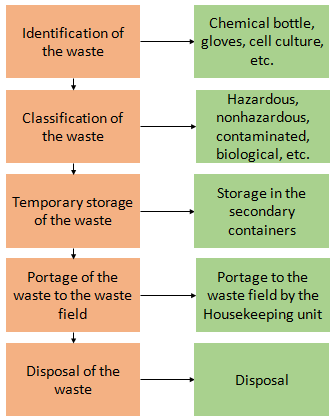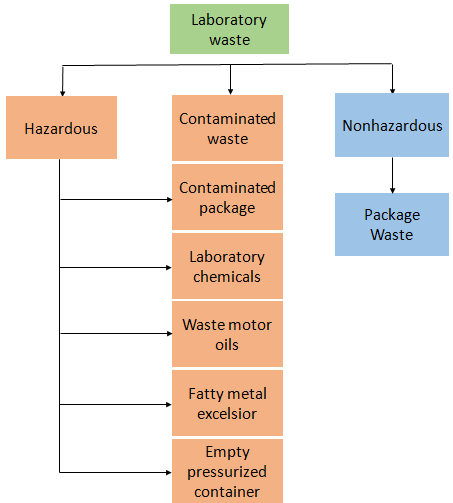Waste Management
Faculty of Engineering and Natural Sciences (FENS) oversees the laboratory waste management principles in accordance with the Environment Regulations and SU Environment and Occupational Safety Policy. Wastes (chemical, biological, mixes) generated from laboratory operations are identified, stored, and disposed without damaging human health and environment.
Waste management is all the activities and action required to manage waste from its inception to its final disposal. This includes amongst other things, collection, transport and disposal of waste together with monitoring and regulation. It also encompasses the legal and regulatory framework that relates to waste management encompassing guidance on recycling
Sabancı University FENS waste management regulations include laboratory performed all activities resulting in the waste category (hazardous, non-hazardous) by preventing harm to environment by means of storage, collection and disposal.
Personal Training
LS or LSS should be contacted for the personal training of the management of hazardous and non-hazardous wastes in Sabancı University FENS laboratories.
General Waste Management Procedures And Waste Determination Process
Sabancı University FENS has strict regulations concerning the management, storage, and disposal of hazardous materials. Within specific activities, LS and LSS will provide advice and technical assistance regarding hazardous wastes. However, it is the responsibility of each individual to know the possible dangers associated with any material being used or generated, and know how the material should be handled and disposed of before a project begins. The schematic below shows the waste management process (Figure A.1):

Material for which Waste Management programme is responsible:
- Chemical waste
- Highly Toxic Material
- Examples include inorganic cyanides, pesticides, and arsenic compounds.
- Used oil
- Biological/infectious waste
- Batteries
- Radioactive waste (Please see Radiation Safety section)
- Sharps
- Broken glass
- Empty compressed gas tanks and pressurized containers
- Electronic waste, which includes unwanted computers, monitors, televisions, audio equipment, printers, laptops, fax machines, telephones and other electronic equipment.
When electronic equipment breaks or becomes obsolete, it must be properly disposed of or recycled.
Types of Waste
Laboratory waste in Sabancı University is classified according to the schematic below (Figure A.2):

Hazardous Waste
- Contaminated waste
- Gloves, respirators, filters, lab coats and materials used in the laboratory
- Contaminated waste – autoclaved
- Bacteria, yeast etc. microbiological waste, live/dead tissue waste
- Contaminated packages
- Rust solver, chemical spray boxes
- Empty pressurized containers
- Rust solver, chemical spray boxes, compressed gas tanks
- Laboratory chemicals
- Fatty metal excelsior
- Waste motor oils
- Sharps
- Broken glass
Non-hazardous Waste
- Package waste
Please see Appendix A.1. Laboratory Waste Guide Table.
Container Labels
All chemical/contaminated/electronic etc. wastes should carry a label identifying their content.
Waste Minimization
Only the quantity of material that will be completely used within a reasonable time frame should be purchased. If the products are stockpiled for future use, valuable space is unnecessarily used and the disposal of the hazardous chemicals are much more difficult when not used.
- Limit the amount you order. Review chemical stocks and needs before ordering.
- Do not stockpile chemicals.
- Avoid duplication - Check your inventory to avoid ordering chemicals that are already in stock. Keep up to date inventories.
- Rotate chemical stocks to use up chemicals before their shelf lives expire. This impacts research and may impact the credibility of results: some chemicals, both organic and inorganic, may degrade or otherwise have reduced or modified reactions over time.
The following guidelines are a checklist to accomplish waste minimization – they are not intended to restrict activities:
- Before beginning a project, determine the hazards associated with the material. Where possible substitute less hazardous substances.
- Use small batch or micro-level reactions where possible.
- Order and maintain minimum quantities of chemicals.
Certain chemicals are difficult and/or costly to dispose of and should be given special consideration. Some types are:
- Heavy metals, e.g., mercury, barium, cadmium, chromium, beryllium, silver, selenium, tellurium, either elemental or in compounds.
- Chlorophenols, dioxins, and cyanides.
- Compressed gases (to include lecture bottles) or containers with liquids under pressure (especially if the substance is poisonous). Where possible arrange with the supplier to accept return of used containers.
Good purchasing decisions are the first steps in minimizing waste generation. Every effort must be made to keep purchase quantities to a minimum. Remember "LESS IS BEST" when planning work and ordering chemicals
References and sources for information from the relevant websites and documentation of different universities, NGOs and government agencies used in the preparation of this website are provided at references.
- Do not mix broken or unbroken glass with regular trash. Glass mixed with regular trash could cause an injury to your custodian.
- Dispose of large glass containers such as solvent bottles in the dumpsters located in the loading dock area. Rinse and dry the glass containers before disposal.
- Dispose of broken glass in a separate trash container designated for and labelled "Broken Glass".
Please see Appendix B.2. Safe for Drain Disposal.
If accidentally any other chemical is poured into the drain, please call 7444 to contact LS or LSS and inform them about the laboratory, name of the spilled chemical, concentration and the hazardous characteristics of it.